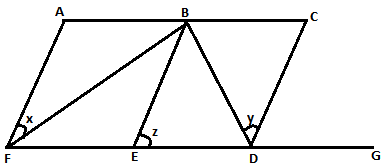5th Grade > Science
WATER MCQs
Total Questions : 50
| Page 3 of 5 pages
Answer: Option B. ->
Groundwater
:
B
Water that seeps through rocks and soil gets collected in underground reservoirs. This water is then pumped out or collected from wells for everyday use.
:
B
Water that seeps through rocks and soil gets collected in underground reservoirs. This water is then pumped out or collected from wells for everyday use.
Answer: Option B. ->
River
:
B
- Fresh water is found in the frozen state in glaciers and ice caps.
- Rivers contains freshwater in the liquid state.
- Ocean and sea contains salt water.
:
B
- Fresh water is found in the frozen state in glaciers and ice caps.
- Rivers contains freshwater in the liquid state.
- Ocean and sea contains salt water.
Answer: Option B. ->
Oceans
:
A, C, and D
Type of water that is available for drinking or to be used in the kitchen or bathroom is fresh water. Sources of fresh water are: Rivers, glaciers and groundwater.
Ocean water is salty water which is not usable for any purpose.
:
A, C, and D
Type of water that is available for drinking or to be used in the kitchen or bathroom is fresh water. Sources of fresh water are: Rivers, glaciers and groundwater.
Ocean water is salty water which is not usable for any purpose.
Answer: Option B. ->
Condensation
:
B
The water vapour around us in air cools down when in contact with a cold object. Hence, droplets of water are seen on the surface of cold bottle.
:
B
The water vapour around us in air cools down when in contact with a cold object. Hence, droplets of water are seen on the surface of cold bottle.
Answer: Option B. ->
Toilet
:
A, B, and D
Sources of usable water are treated as dumpyards. All kinds of wastes from our kitchens, toilets and from local industries all are directly dumped in lakes and rivers. These wastes make the water bodies dirty.
:
A, B, and D
Sources of usable water are treated as dumpyards. All kinds of wastes from our kitchens, toilets and from local industries all are directly dumped in lakes and rivers. These wastes make the water bodies dirty.
Answer: Option B. ->
evaporation
:
B
Evaporation is the process in which liquids turn into gas. The roads dry up after a rainy day as the water absorbs heat from sunlight and evaporates.
:
B
Evaporation is the process in which liquids turn into gas. The roads dry up after a rainy day as the water absorbs heat from sunlight and evaporates.
Answer: Option D. ->
Atlantic Ocean
:
D
:
D
The Atlantic Ocean is the second largest ocean on the Earth. It covers almost 20% of the Earth's Surface. The largest ocean is Pacific Ocean.
Answer: Option A. ->
Surface run off
:
A
In this method, rain is allowed to flow on the ground and then collected into small tank below the ground level. This is all the excess water that cannot be absorbed by the soil.
:
A
In this method, rain is allowed to flow on the ground and then collected into small tank below the ground level. This is all the excess water that cannot be absorbed by the soil.
Answer: Option C. ->
Hydrological Cycle
:
C
"Hydro" was derived from the Greek word hudōr which means water.
:
C
"Hydro" was derived from the Greek word hudōr which means water.
Answer: Option C. ->
Sumps
:
A, B, and C
Freshwater from canals is stored in large water tanks, which is then distributed to houses.
Once it reaches our house, it is stored in small underground tanks called sumps. This water then reaches our tap through a system of pipes.
:
A, B, and C
Freshwater from canals is stored in large water tanks, which is then distributed to houses.
Once it reaches our house, it is stored in small underground tanks called sumps. This water then reaches our tap through a system of pipes.

















